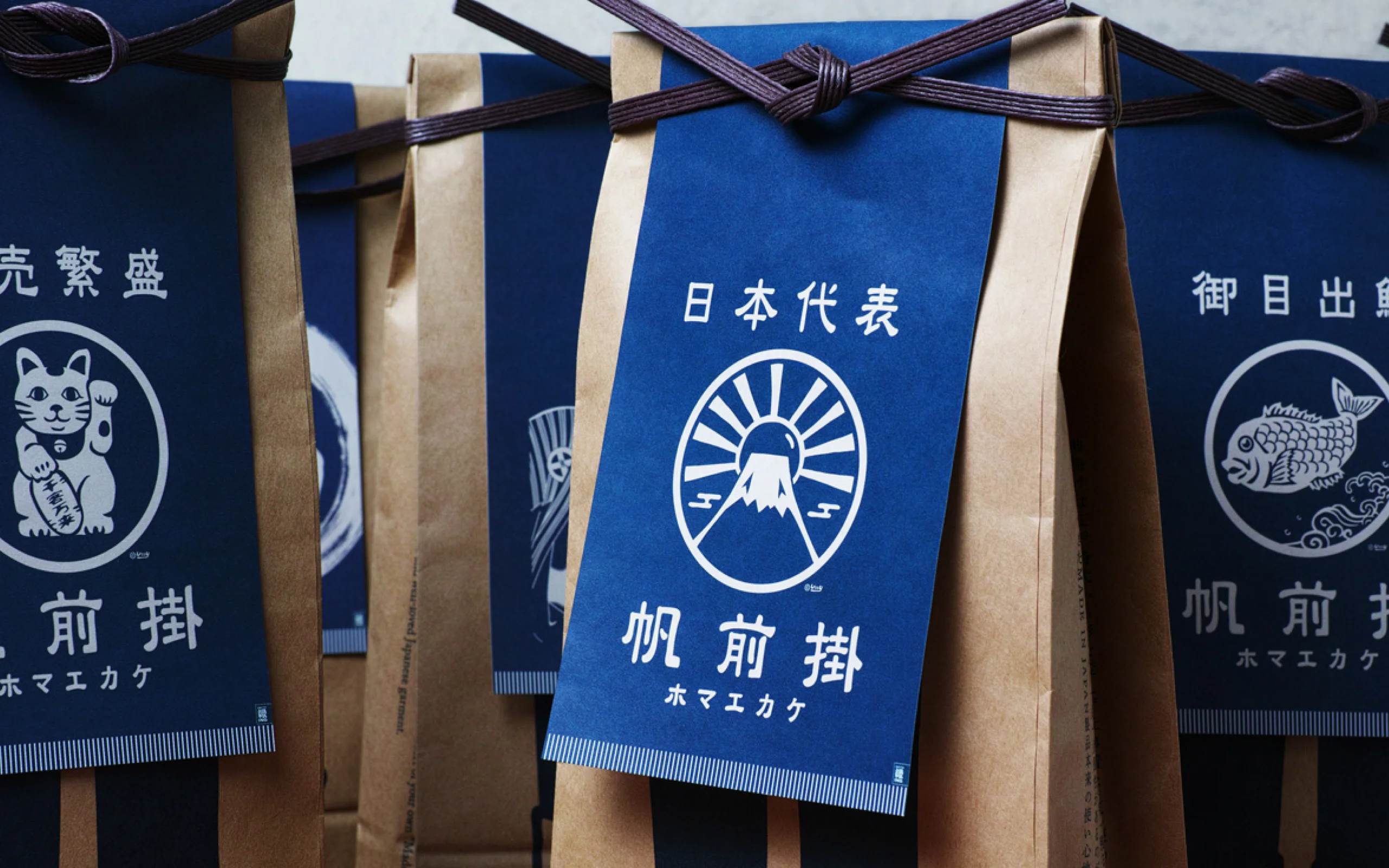
PROJECT
ANYTHING
Traditional apron maker's rebrand drove global sales success.

WHY
The Maegake,
a symbol of merchant culture,
is on the verge of disappearing.
In Japan, there is work wear called “Maegake,” which is worn around the waist like an apron by liquor dealers, fishmongers, rice dealers, etc. It is said that the Maegake originated around the 15th century and took its present form during the Edo period, protecting workers’ waist and preventing tears and injuries to their clothing. In addition to such practicality, from around the Meiji period, Maegake were used by many people as a symbol of Japanese merchant culture, with “yagō” (shop number) being dyed on them and used as uniforms and for advertising purposes.
Toyohashi City in Aichi Prefecture, known as the production center of Maegake, saw a rapid increase in production after World War II as demand for Maegake increased, but demand has decreased over time, and there is now only one factory left that can weave the thick Maegake fabric called “ichi-gō,” which has been used since the Edo period. The culture and industry of Maegake, a symbol of Japan’s merchant culture, could no longer be said to be a dying industry.
Changes in production value of
traditional craft industry.

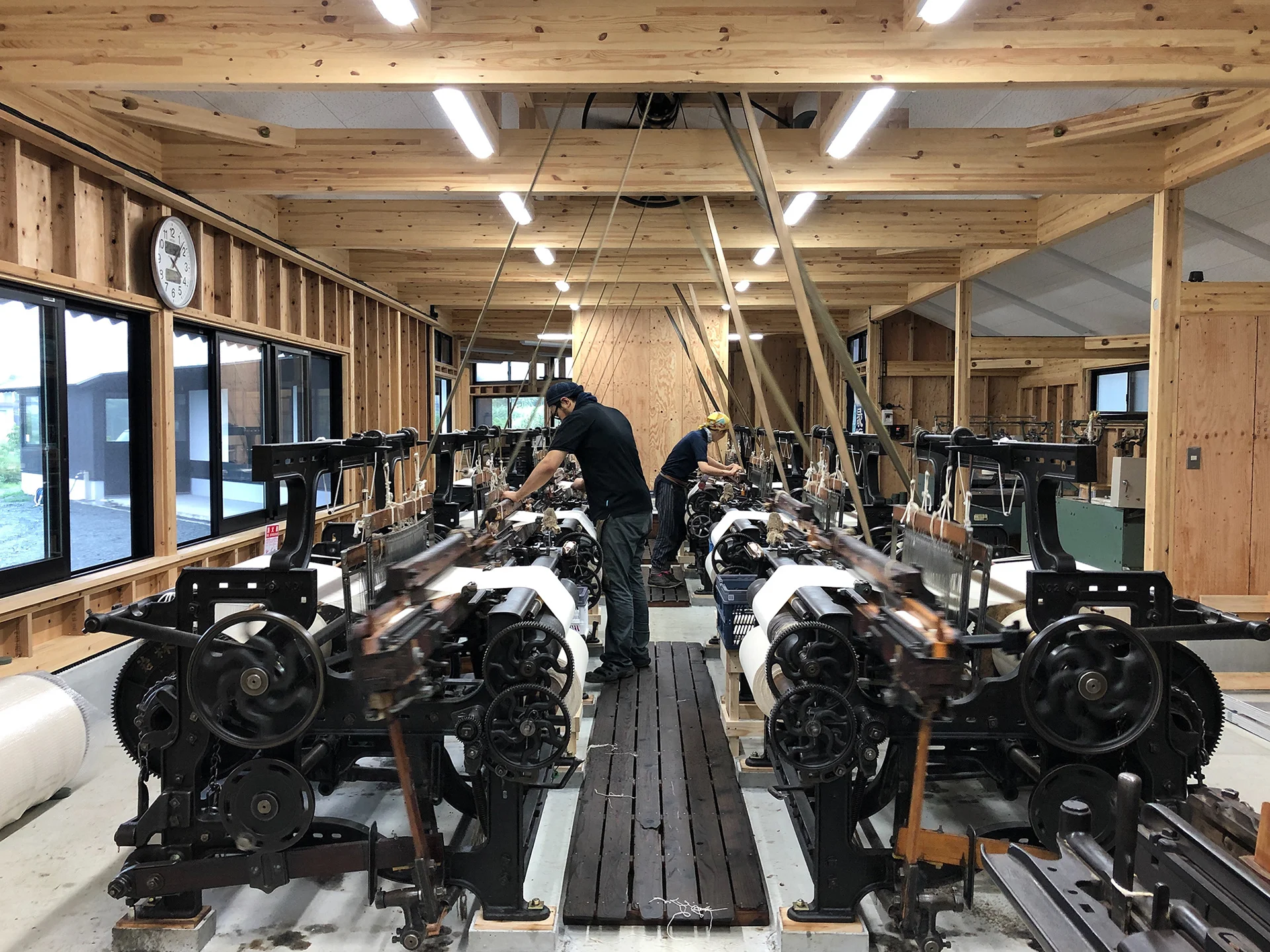
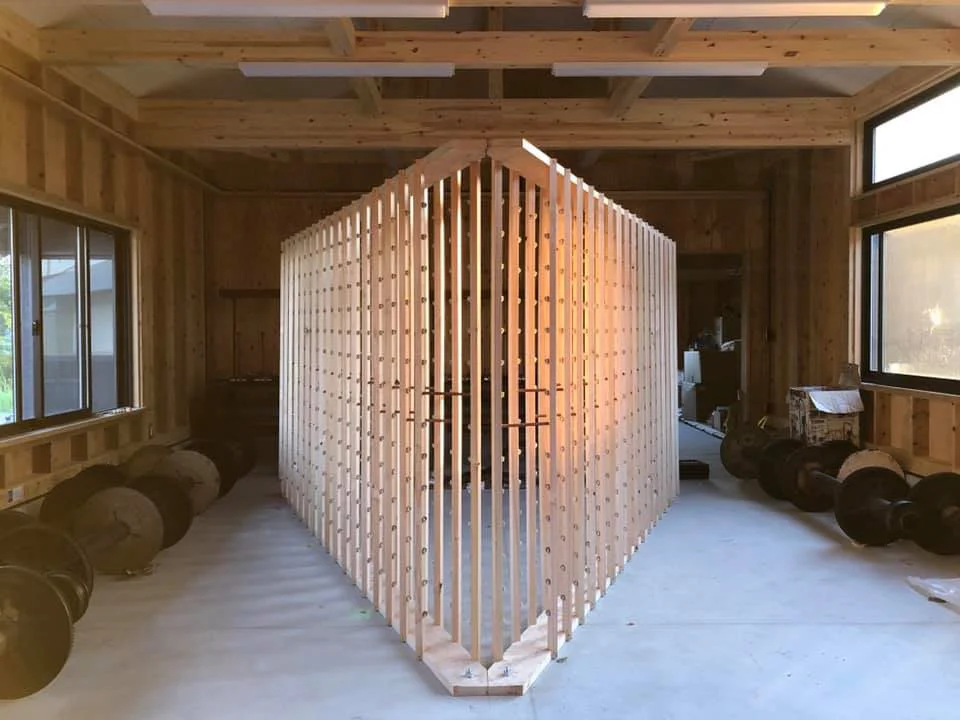

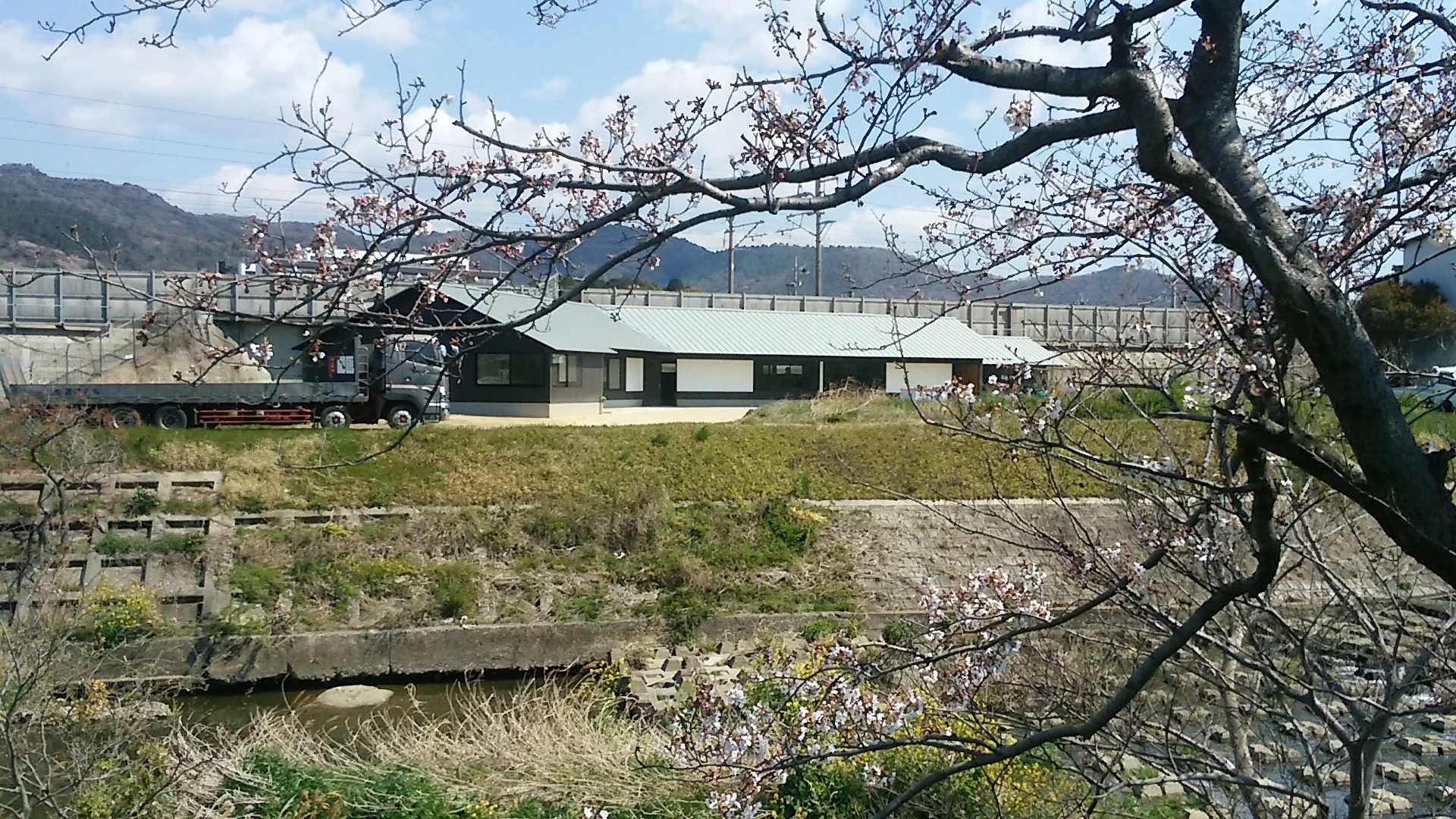
HOW
Designing a miniature
apron-like paper packaging.

We designed the package for the apron brand “ANYTHING,” together with the craftsmen of the last “ichi-gō Maegake” manufacturing factory. Up until now, the aprons were wrapped in vinyl, similar to how T-shirts are commonly sold. However, in its folded state, the overall pattern is not visible, and its unique texture cannot be felt of the “ichi-gō Maegake,” hard to recognize it as an apron. As it was difficult to display them on the store wall due to limited space, we aimed to innovate the sales of the apron with design. We printed on rice bags, with legs illustrated to fit under the miniature version of the apron of the same pattern as the product inside. By arranging these together in the store, the brand’s diverse lineup could be conveyed easily, at the same time how it is worn. In addition, a small hole on the back side allows the user to see the texture of the front cover, which enhances the value of the purchasing experience, and the sustainable design reduces environmental impact by removing plastic from the package.
The logo design, which uses both Chinese and European characters, visualizes the origin of the company name: “We want to do work that is useful through the continuity (ing) of relationships (enishi), which is the meeting of people. The Chinese character “En” is written in the style of signboard characters from the Edo period (1603-1867), when the “Maegake” (hanging scrolls) were widely used, to express the dignified atmosphere and merchant culture symbolized by the “Maegake”. On the other hand, the European text uses the gothic “Copper Plate” typeface, which is also often used for signboards, to create a design that combines the traditions of Japanese culture with a modern feel.
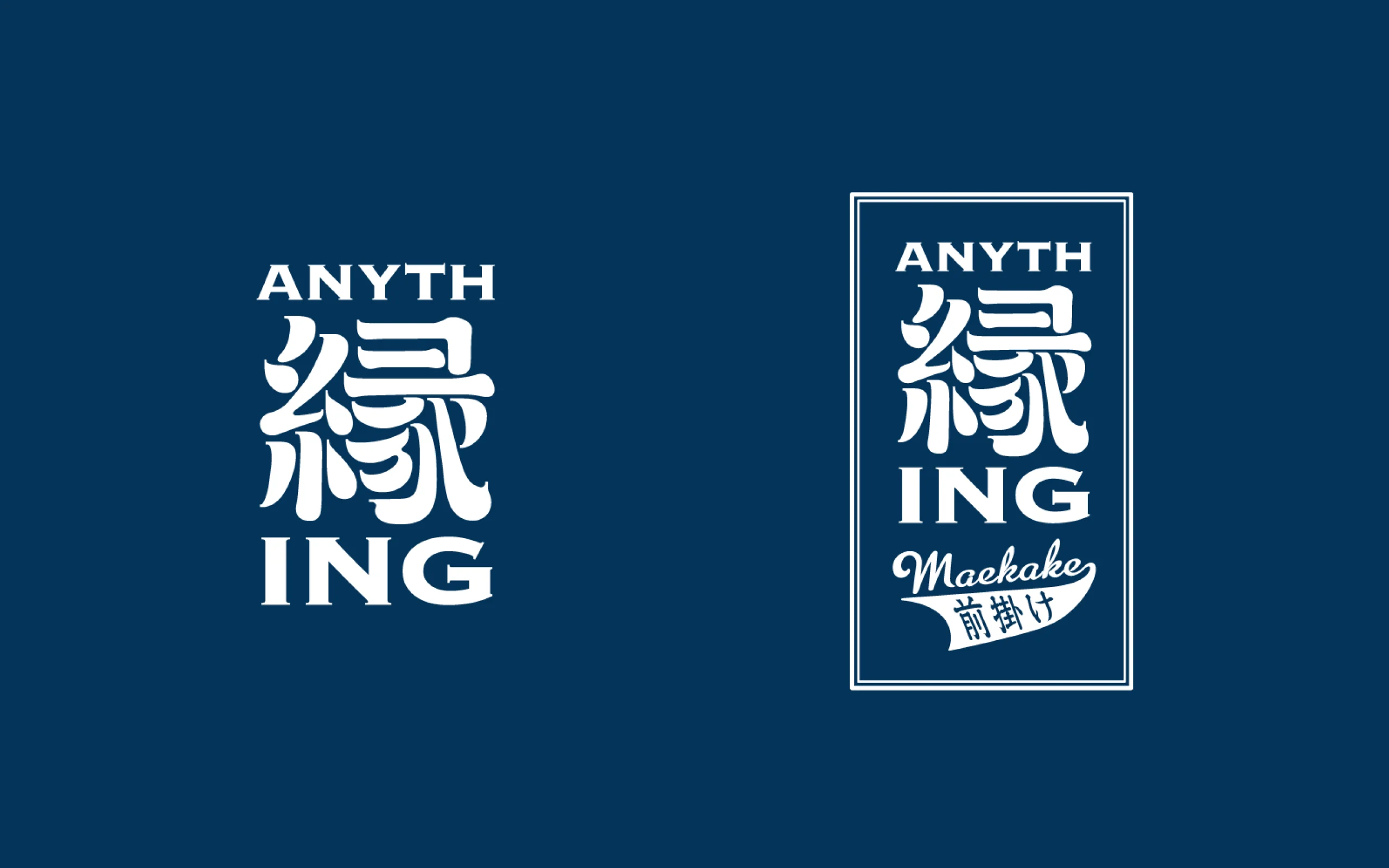

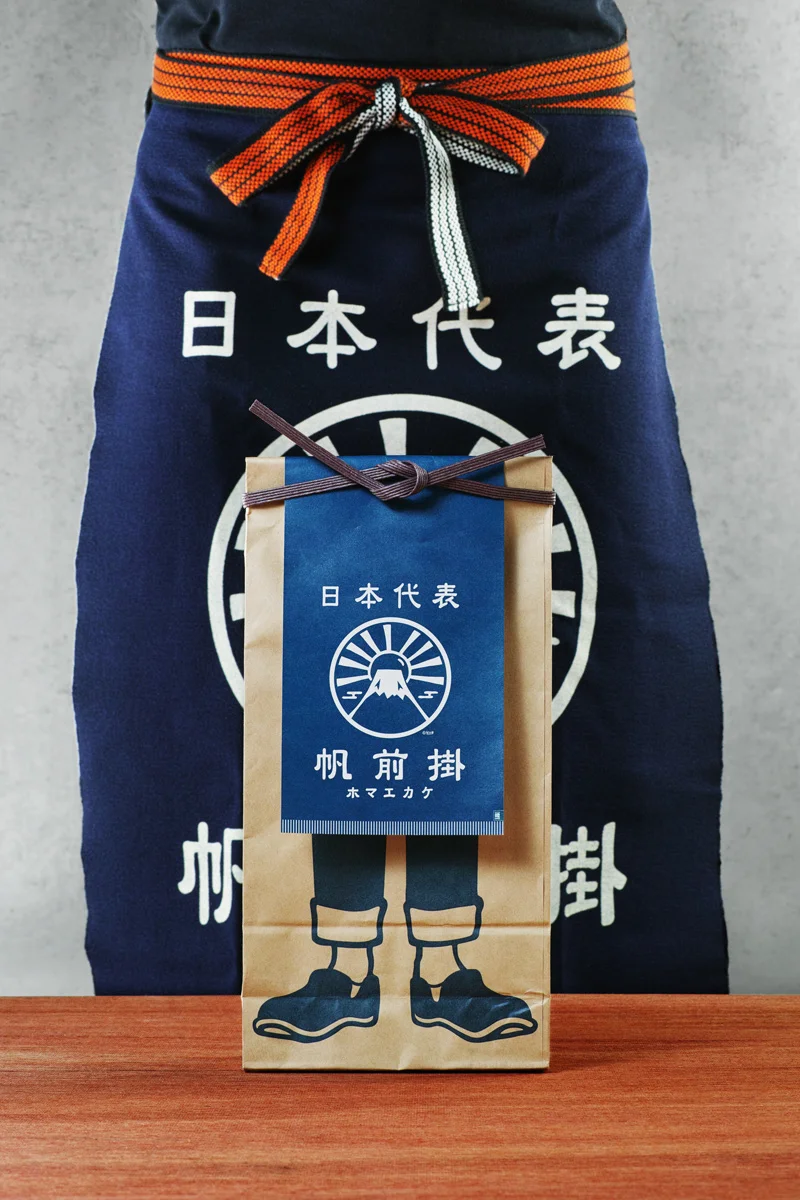
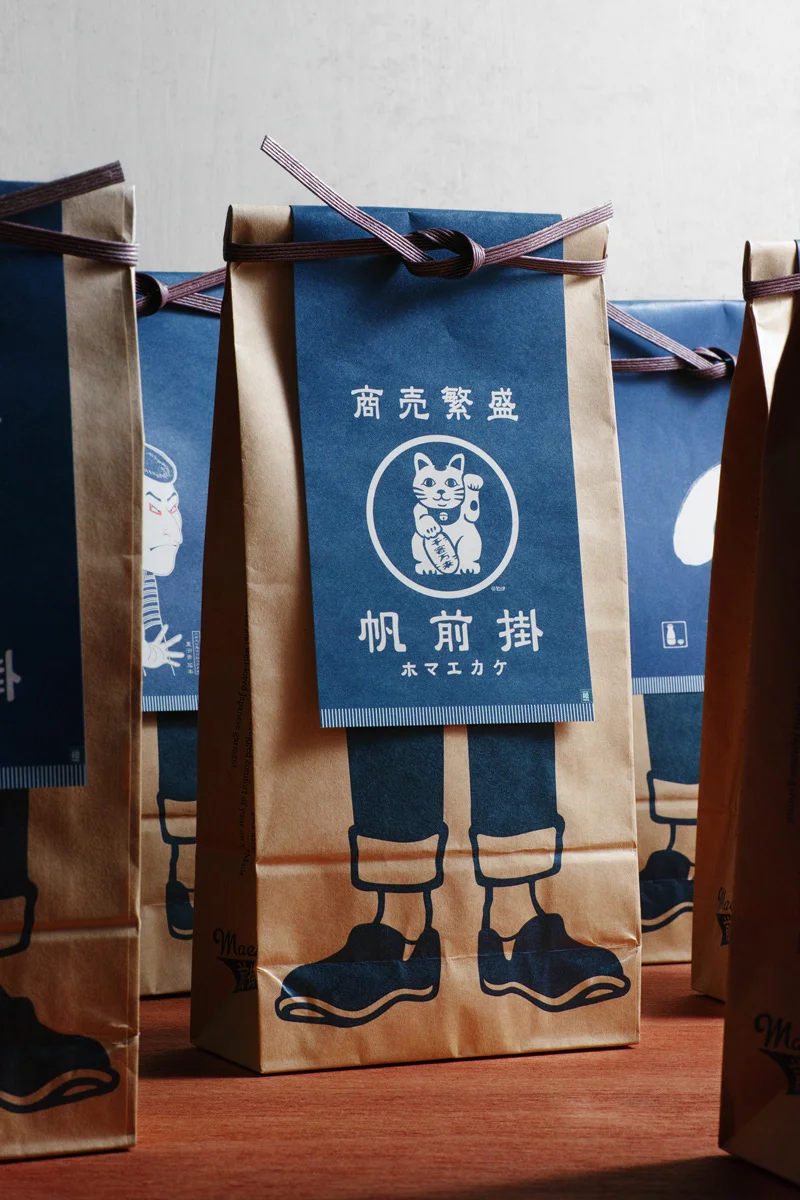
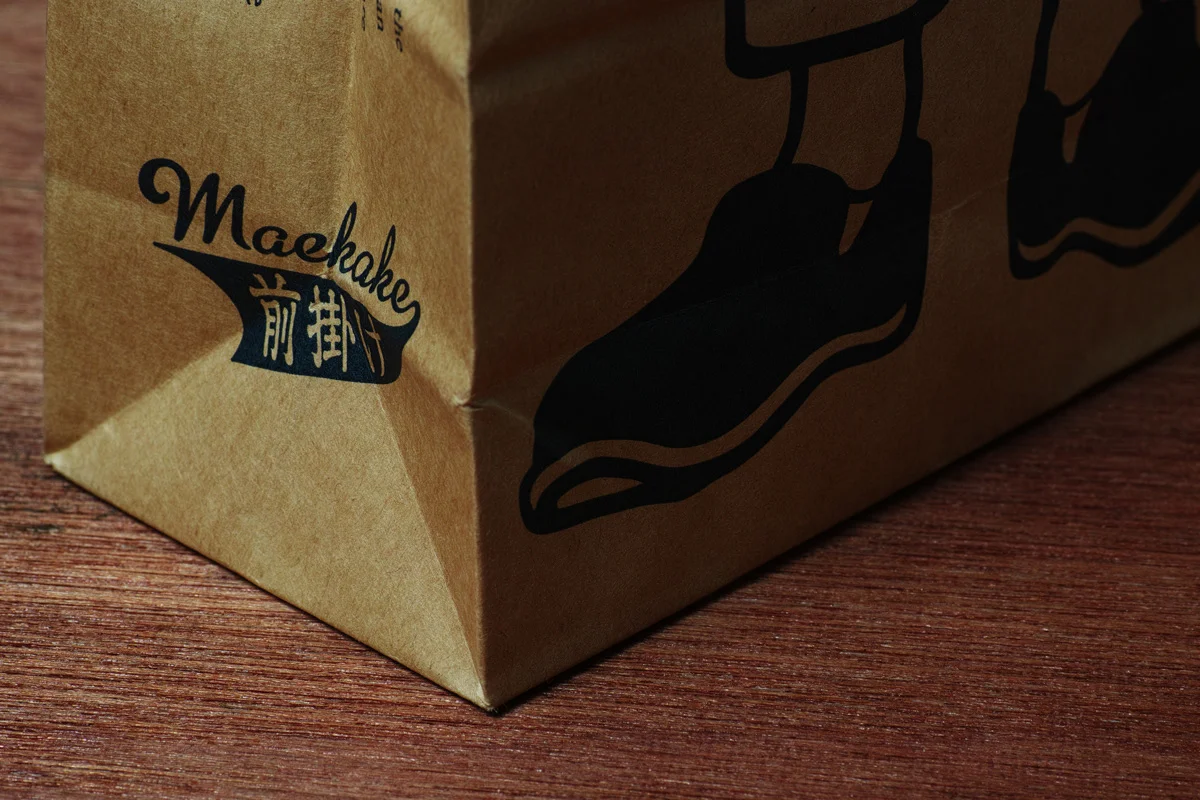
WILL
Make the Japanese apron
a global hit product.
The in-store purchasing experience has dramatically improved, and in the four years since the packaging was redesigned, sales have increased by 2.2 times. The number of restaurants that have adopted the front coverings as their uniforms and the number of companies and brands that create original front coverings for PR and novelty purposes has increased, and since they are now also sold at airports, many foreign travelers are buying them as souvenirs.
Currently, the product is sold in cafes, gardening stores, general merchandise stores, museum stores, etc. in about 30 countries around the world, mainly in the U.K. and the U.S. In the movie “007: No Time to Die,” released in 2021, a character uses “ANYTHING” as an apron while cooking at home and the “ANYTHING” aprons have gained further attention as aprons for cooking.
Although productions were in a precarious position, they have now been revived and established as a business. We hope for these traditional aprons that symbolize Japanese merchant culture, will spread all over the world.

INFORMATION
- What
- ANYTHING
- When
- 2014
- Where
- Toyohashi City, Aichi Prefecture, Japan
- Client
- Scope
- Branding / Logo / Packaging / Promotion Strategy Support
CREDIT
- Art Direction
- NOSIGNER (Eisuke Tachikawa)
- Graphic Design
- NOSIGNER (Eisuke Tachikawa, Kaori Hasegawa)
- Photo
- NOSIGNER (Kunihiko Sato)









